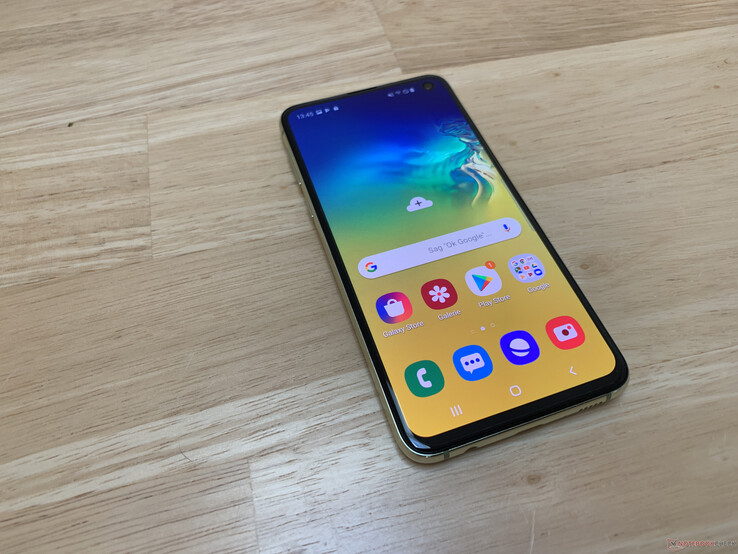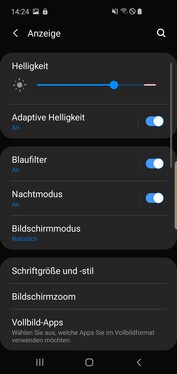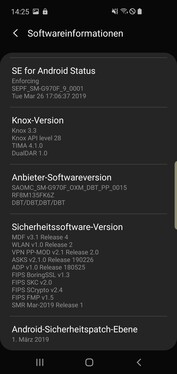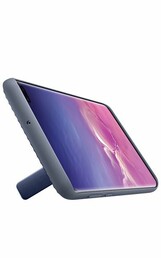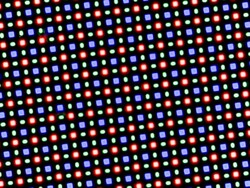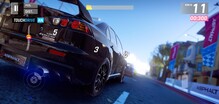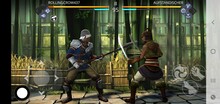Samsung Galaxy S10e Smartphone Review

The endless rumours and speculation had us believe that Samsung would release three flagship smartphones this year and it did not disappoint. After all, Apple did the same last year with the iPhone XR, iPhone XS and XS Max, so it should come as no surprise that Samsung has followed suit. Hence, Galaxy S10e rivals the iPhone XR as being an “affordable flagship”, although it still retails for €749 (~$843), which is considerably more than OnePlus or Xiaomi charge for their supposedly flagship smartphones. Online prices have already dropped to around €700 (~$788) though, making the S10e ever so slightly more affordable.
It is worth keeping in mind that Samsung has made some cost savings to keep the price of the S10e down. The ultrasonic fingerprint sensor is gone in favour of a sensor integrated within the power button, while the curved display has been eschewed for a flat display that also operates at a lower resolution. The S10e also has just dual rear-facing cameras compared to the three that the Galaxy S10 and S10+ have. All three smartphones share the same SoC and other flagship features such as reverse wireless charging.
The S10e could represent the sweet spot for the S10 series but to assess this we will compare our review unit against the Galaxy S10 and S10+. Moreover, we will examine the S10e against other “affordable flagships” like the Apple iPhone XR, Honor View 20 and OnePlus 6T.
- 03.27.2019: First impressions and photos
- 03.29.2019: Benchmarks added, Communication & GPS section updated, Telephone Functions & Call Quality and Temperature sections added
- 03.30.2019: Display measurements added, Power Consumption, Battery Life and Input Devices & Operation sections added.
- 04.01.2019: GPS test section added. More camera shots added. PWM, Response Times and Pink Noise information added.
- 04.02.2019: Review completed
Case
The S10e has a 5.8-inch screen, making it the smallest of this year's Samsung flagships. The device has a punch-hole display like its bigger siblings without the need for a notch. The S10e has a 19:9 aspect ratio, but the positioning of the camera is such that it should disappear into the black bars that letterbox 16:9 videos without obscuring anything like a notch could.
It is not all cutbacks and cost savings with the S10e either. Samsung sells the device in more colours than it does with the Galaxy S10 or S10+. The S10e comes in Prism Black, Green and White like the Galaxy S10, but also Canary Yellow, which is an extremely bright hue of yellow as official images suggest. All four colours have the same black display, but everything else is of the same colour apart from the rear-facing camera array. Please keep in mind that the ceramic back is exclusive to the Galaxy S10+ and is not available on the Galaxy S10 or S10e.
Moreover, while Samsung uses Gorilla Glass 6 on the front of the Galaxy S10, it has opted for Gorilla Glass 5 with the S10e. Gorilla Glass promises that the former can survive up to twice the drops that the latter can and from higher heights too. Incidentally, both the S10e and Galaxy S10 have Gorilla Glass 5 backs.
The S10e is just as well made as its bigger siblings. Everything is top-notch with our review unit; all gaps between materials are even and tight. The device weighs just 150 g (~5.3 oz) too, which feels pleasantly light and is lighter than all our comparison devices. The S10e is also IP68 water resistant and dustproof, as are the Galaxy S10 and S10+.
Connectivity
While Samsung sells the Galaxy S10 and S10+ in multiple storage and RAM options, the Galaxy S10e currently comes with only 128 GB of storage and 6 GB of RAM. This still puts the S10e on par with other modern flagships and you can add up to a 512 GB microSD card should you need more storage. Unfortunately, the S10e only has a Hybrid second SIM slot, which means that you must choose between dual SIM functionality and microSD card expansion.
The S10e can read microSD cards formatted in ExFAT too, but it cannot format cards as internal storage. However, you can store apps and data on expandable memory, but you must first activate the corresponding setting in Developer Options.
Samsung equips the S10e with a 3.5 mm jack too, but an IR blaster and FM radio are missing from all S10 models. The device also supports dual-audio Bluetooth 5.0, but it cannot output in aptX HD, which is disappointing.
Software
The Galaxy S10e ships with One UI, which is a Samsung customised version of Android 9.0 Pie. One UI looks tidier, cleaner and feels faster than Samsung Experience, which it replaced in late 2018.
Bixby remains a focus of One UI, and now supports more languages, including German along with a new option to set routines. Like Google Assistant, Bixby can now also learn from your habits and provide advice on when to take a break or the optimal route based on current traffic information.
Samsung has also announced that it will make the Bixby button configurable via a software update. The company refers to this as “Bixby Key Customization”, although we could not test this at the time of writing, we suspect that Samsung will roll it out soon via an OTA update. The feature should make its way to the Galaxy S8 and S9 series too.
Samsung includes plenty of bloatware, including its Galaxy Store. Our review unit has a few Microsoft apps pre-installed too, which can only be disabled. Most of the pre-installed apps cannot be uninstalled.
The S10e is DRM Widevine Level 1 certified, which allows the device to stream content in HD from services such as Amazon Prime Video and Netflix. Other devices such as the Xiaomi Mi Mix 3 are only Level 3 certified, which restricts them to streaming videos in only standard definition.
Communication & GPS
The S10e supports Wi-Fi 6 as do its bigger siblings. The Wi-Fi Alliance has decided to change the classification with the new ax standard, so IEEE 802.11-ax has become Wi-Fi 6. The Wi-Fi module supports VHT80 and can connect to 2.4 GHz or 5 GHz networks. Samsung claims that the device can achieve up to 1.2 GBit/s download speeds, which is impressively fast. However, the Mate 20 Pro could theoretically achieve up to 1.7 GBit/s with VHT160 despite supporting up to the older Wi-Fi 5, or 802.11 ac, standard.
Our reference router, the Linksys EA8500, does not yet support Wi-Fi 6, which limits our review unit to running at Wi-Fi 5 instead. Our review unit achieved excellent transfer speeds in iperf3 Client Wi-Fi tests, but it averaged around 18.5% slower download speeds than its bigger siblings. The slightly slower download speeds should not make a difference in daily use though, unless you have an incredibly fast Wi-Fi connection.
The S10e has decent LTE coverage, although other flagships such as the OnePlus 6T support more bands. However, Samsung claims that the device supports up to 2 Gbit/s download speeds over LTE, which is impressive. Unfortunately, we cannot currently verify this as few LTE networks have such a high bandwidth. Our review unit maintained decent mobile network reception throughout our tests in an inner-city area though.
| Networking | |
| iperf3 transmit AX12 | |
| Apple iPhone XR | |
| Samsung Galaxy S10 | |
| OnePlus 6T | |
| Samsung Galaxy S10e | |
| Samsung Galaxy S10 Plus | |
| Honor View 20 | |
| iperf3 receive AX12 | |
| Samsung Galaxy S10 | |
| Samsung Galaxy S10 Plus | |
| OnePlus 6T | |
| Samsung Galaxy S10e | |
| Apple iPhone XR | |
| Honor View 20 | |
Our review unit cannot locate us indoors, but it can do so with up to 24 metres (~79 ft) accuracy when placed next to a window. Likewise, GPS accuracy rose to within 6 metres (~20 ft) when we took the device outside. All results are worse than our Galaxy S10 and S10+ review units, for reference.
We also took the S10e out on a bike to test its location accuracy against our trusty Garmin Edge 520 navigation system. Our review unit performed surprisingly well and recorded a 50 metre (~164 ft) longer route than the Garmin did. Despite its limited GPS precision, the S10e occasionally tracked us more accurately than the Garmin could, which is best represented by the “Loop” screenshots below. Our review unit kept pace with us while cycling through narrow streets too, so the S10e should have no problems with general navigation tasks such as cycling, driving or walking.
Moreover, the S10e is accurate to within a few feet on Google Maps. However, our review unit typically at first thinks we are inside of a building that we stood next to or on the wrong side of the street altogether. The device quickly corrects itself though, while the compass promptly and correctly changes its positioning whenever we move our review unit.
Telephone Features and Call Quality
The S10e has the same suite of telephony apps as its bigger siblings. Samsung has updated the phone app as part of the One UI refresh, with the company re-adding the places tab that it had previously removed. The tab lists nearby shops and restaurants along with corresponding coupons. The rest of the app functions and operates just as other Phone apps do.
The S10e supports Wi-Fi calls too, like the Galaxy S10 and S10+. You must first enable the option in the Phone app within its settings like any other smartphone running One UI. The S10e supports voice over LTE (VoLTE) too, which is not switched on by default. Samsung has buried the corresponding setting in the Mobile Networks sub-menu, which can be found under Connections in the main Settings menu. Confused? We are too.
Our review unit has decent call quality, and its earpiece can get loud, but cranking the volume up makes voices sound distorted, which is disappointing. Setting the call volume to medium addressed this though. By contrast, the microphone is excellent and transmitted our voice clearly without any interference throughout our tests. The loudspeaker is good too, during which the microphone had no issues with picking up our voice.
Cameras
The S10e has dual rear-facing cameras, with Samsung having omitted the telephoto lens with which it has equipped the Galaxy S10 and S10+. The main camera and super-wide-angle sensors are the same though, so all three devices should deliver comparable results.
We took our comparison photos, which you can view below, with the main camera. The 12 MP sensor has a variable aperture like the one that Samsung used in the Galaxy S9 and is optically stabilised (OIS) too. The S10e takes decent photos overall, but Huawei has its nose in front with the P30 Pro and Mate 20 Pro. The main sensor in our review unit generally better captures fine details than the OnePlus 6T and iPhone XS Max can, but it is worse than those two in low-light as demonstrated in scene 3.
The S10e also has a neural processing unit (NPU) that Samsung integrates within the Exynos 9820 SoC. The NPU can differentiate between 30 different scenes and can optimise the camera settings accordingly. Additionally, the default camera app can suggest how to position the camera to obtain the optimal photo. The NPU worked well overall during our tests, but its tips were not always useful.
Samsung has equipped the S10e with a single front-facing camera just like it has with the Galaxy S10. The 10 MP sensor sits below the display and takes impressive pictures.
The S10e has good video capabilities too. The device can record in UHD with a 16:9 aspect ratio, but enabling this resolution disables all video effects that are available at different resolutions and aspect ratios. Moreover, the main camera stabilises Full HD videos better than those shot at UHD, although they still blur easily even at Full HD. Recording in HDR+ is novel too, although it was not yet finalised at the time of writing. Finally, the super-wide-angle sensor can only utilise all the video effects that the main sensor can when it is recording in Full HD at 30 FPS, which is disappointing.
Overall, the image and sound quality of videos shot with the S10e is decent. However, our review unit adjusts exposure too aggressively for our liking, which can look jarring in videos.
Please see our first sample photos below. We have included a super slow-motion video too. Disappointingly, Samsung does allow you to choose how long you can shoot in slow motion for, although the effect is well done.
Our review unit succeeded in our camera tests that we conducted under laboratory conditions too. The test chart captured by the main camera looks sharp, and the colours are reproduced accurately compared to the ColorChecker Passport reference colour. Some colours are too bright for our liking, but this is only a minor complaint.
Accessories & Warranty
Samsung includes the same accessories with the S10e as it does with the Galaxy S10 and S10+. Our review unit has a modular power supply (9 V, 1.67 A/5 V, 2 A), a USB Type-A to Type-C cable, two USB On-The-Go (OTG) adapters, a set of AKG headphones and a SIM tool. The OTG adapters are Type-A to Type-C and micro USB to Type-C, for reference, while Samsung also includes numerous warranty and safety instructions along with a quick guide. The black version comes with all-black accessories too.
The South Korean company also sells some S10e specific accessories like its Clear View Cover, which costs €55 (~ US$62) along with its LED View Cover, that costs €10 (~$11) more. Moreover, the company also sells a silicone cover for just under €30 (~$34) or a Protective Stand Cover that retails for around €35 (~$39). The matching wireless charging station costs about €100 (~$113).
The S10e comes with 24 months manufacturer’s warranty, 12 months for the battery and six months for the accessories that are included in the box. It is worth keeping in mind that Samsung continues to include liquid damage as a warranty exclusion. We asked Samsung's German executives about this limitation at last year’s Samsung Service Center Day, to which they assured us no intact Galaxy S had been rejected for a warranty repair because of liquid damage, and customer services should waive the exclusion as a gesture of goodwill if the exclusion could potentially be applied. While the S10e is IP68 water resistant, previous drops could damage the water-resistant seal around the case to the point that the device becomes liquid damaged when subsequently dropped in water.
However, Samsung could not guarantee that it would carry out a warranty repair if the device becomes liquid damaged if a third-party repairer fails to reseal the device correctly. Hence, we would recommend contacting Samsung first if you need your device repaired as you could end up voiding your warranty.
Samsung continues to sell its Care+ additional warranty package, which currently costs €149 (~$169) and covers your smartphone from accidental damage including, but not limited to, breaking the screen and liquid damage. Samsung limits the additional coverage to two claims within the service period, each of which are subject to a €79 (~$90) excess fee.
Please see our Guarantees, Return policies and Warranties FAQ for country-specific information.
Input Devices & Operation
We can only find words of praise for the touchscreen in our review unit. It responded quickly and precisely to our inputs throughout our tests, although the area around the camera cut out does not always respond if we swipe down from that area.
Samsung continues to pre-installs its keyboard as the default keyboard. The company has made some minor changes compared to the one that it included with the Samsung Experience UI. The keyboard now can make word suggestions, spelling corrections and supports swipe gestures along with other features such as multiple language support. Alternatively, you could enable the beta version of Samsung’s neural keyboard, which uses machine learning to make better grammatical and spelling suggestions than the default keyboard. Moreover, you could download a third-party keyboard from places such as the Google Play Store should you prefer a different layout.
Samsung has placed the Bixby button on the left-hand side of the S10e’s frame as it has with all three S10 models. The Bixby button is now configurable and can be set to trigger an app or command. While the button supports double and single presses, you must set Bixby to at least one of those.
The S10e also has a fingerprint sensor that Samsung has integrated within the power button, unlike the ultrasonic sensors that the Galaxy S10 and S10+ have. Having a side mounted fingerprint sensor is not necessarily a bad thing and it is something that Sony did with devices such as the XZ Premium, but it is something that you will have to get used to. Samsung has placed the sensor comparatively high up the frame on the S10e, which some people may find awkward at first. Moreover, we have seen fingerprint sensors combined with the power button before like the LG V30. Again, it may take some acclimatisation if you are coming from a Galaxy S8 or S9 because you may end up locking the device again if you place your finger too firmly on the sensor while it is at the lock screen and accidentally activate the power button instead. Overall, the sensor worked perfectly during our tests and unlocked our review unit without hesitation.
Display
The S10e has an AMOLED screen like its bigger siblings, but the similarities all but end there. Samsung has equipped the device with a flat display, unlike the ones that curve into the frames of the Galaxy S10 and S10+. Moreover, the panel in the S10e runs natively at 2,280 x 1,080, or 1080p, rather than the 1440p displays with which Samsung equips its bigger siblings. Incidentally, our review unit achieved an average maximum brightness of 427 cd/m², which is 43% darker than the display in our Galaxy S10+ review unit. The panel is 96% evenly lit too, putting it on par with our other comparison devices in this regard, but a few percent off the S10+.
| |||||||||||||||||||||||||
Brightness Distribution: 96 %
Center on Battery: 426 cd/m²
Contrast: ∞:1 (Black: 0 cd/m²)
ΔE ColorChecker Calman: 2.14 | ∀{0.5-29.43 Ø4.78}
ΔE Greyscale Calman: 1.8 | ∀{0.09-98 Ø5}
97.5% sRGB (Calman 2D)
Gamma: 2.111
CCT: 6329 K
| Samsung Galaxy S10e AMOLED, 2280x1080, 5.8" | OnePlus 6T Optic AMOLED, 2340x1080, 6.4" | Honor View 20 LTPS, 2310x1080, 6.4" | Samsung Galaxy S10 OLED, 3040x1440, 6.1" | Samsung Galaxy S10 Plus OLED, 3040x1440, 6.4" | Apple iPhone XR IPS, 1792x828, 6.1" | |
|---|---|---|---|---|---|---|
| Screen | -7% | -21% | -22% | -22% | 23% | |
| Brightness middle (cd/m²) | 426 | 437 3% | 492 15% | 701 65% | 710 67% | 672 58% |
| Brightness (cd/m²) | 427 | 442 4% | 475 11% | 705 65% | 721 69% | 641 50% |
| Brightness Distribution (%) | 96 | 95 -1% | 94 -2% | 98 2% | 97 1% | 92 -4% |
| Black Level * (cd/m²) | 0.4 | 0.35 | ||||
| Colorchecker dE 2000 * | 2.14 | 2.21 -3% | 2.4 -12% | 3.7 -73% | 3.7 -73% | 1.3 39% |
| Colorchecker dE 2000 max. * | 3.29 | 4.27 -30% | 5.2 -58% | 10.3 -213% | 10.3 -213% | 2.7 18% |
| Greyscale dE 2000 * | 1.8 | 2.1 -17% | 3.2 -78% | 1.4 22% | 1.5 17% | 2.2 -22% |
| Gamma | 2.111 104% | 2.307 95% | 2.06 107% | 2.1 105% | 2.1 105% | 2.3 96% |
| CCT | 6329 103% | 6353 102% | 7125 91% | 6553 99% | 6611 98% | 6868 95% |
| Contrast (:1) | 1230 | 1920 |
* ... smaller is better
Screen Flickering / PWM (Pulse-Width Modulation)
| Screen flickering / PWM detected | 232 Hz | ||
The display backlight flickers at 232 Hz (worst case, e.g., utilizing PWM) . The frequency of 232 Hz is relatively low, so sensitive users will likely notice flickering and experience eyestrain at the stated brightness setting and below. In comparison: 53 % of all tested devices do not use PWM to dim the display. If PWM was detected, an average of 8108 (minimum: 5 - maximum: 343500) Hz was measured. | |||
The S10e still achieves an almost perfect black value and contrast ratio though, as all devices with AMOLED or OLED panels do. While this gives the S10e the edge over only the Honor View 20 and iPhone XR in this regard, colours will should look vivid and punchy as the rest of our comparison devices.
OLED panels do not have a backlight like LCD panels do, which is something of a poisoned chalice. While the lack of backlight helps deliver an excellent contrast ratio and low black value, it means that the panel must use pulse-width modulation (PWM) to regulate the screen brightness. PWM can cause eye strain and headaches for some people because it flickers the display at a given frequency, which we measured at around 232 Hz for our review unit. This flickering is not visible at maximum brightness, but it is relatively low so it could cause issues for those who are PWM sensitive.
The screen also has approximately 6 ms response times, which means that you should notice no screen tearing when playing fast-paced games.
Our review unit has two colour modes just like its bigger siblings. The default mode, normal, is impressively colour accurate, but it cannot cover the sRGB colour space fully. To achieve this you must switch to the Vivid mode, but this oversaturates colours too much for our liking. However, our review unit covers all the sRGB and DCI P3 colour spaces along with 93% of AdobeRGB, which is decent. We should point out though that CalMAN colour space measurements are only indicative as it is completely accurate.
Display Response Times
| ↔ Response Time Black to White | ||
|---|---|---|
| 6 ms ... rise ↗ and fall ↘ combined | ↗ 3 ms rise | |
| ↘ 3 ms fall | ||
| The screen shows very fast response rates in our tests and should be very well suited for fast-paced gaming. In comparison, all tested devices range from 0.1 (minimum) to 240 (maximum) ms. » 17 % of all devices are better. This means that the measured response time is better than the average of all tested devices (20.2 ms). | ||
| ↔ Response Time 50% Grey to 80% Grey | ||
| 6 ms ... rise ↗ and fall ↘ combined | ↗ 3 ms rise | |
| ↘ 3 ms fall | ||
| The screen shows very fast response rates in our tests and should be very well suited for fast-paced gaming. In comparison, all tested devices range from 0.165 (minimum) to 636 (maximum) ms. » 17 % of all devices are better. This means that the measured response time is better than the average of all tested devices (31.6 ms). | ||
The S10e is usable outdoors, even on sunny days thanks to its bright display. We would recommend avoiding direct sunlight where possible though because reflections can obscure what is being displayed onscreen.
Our review unit also has stable viewing angles thanks to its OLED panel. We noticed no brightness, colour or image distortions even at acute viewing angles, so you should be able to read the screen from almost any angle.
Performance
The S10e comes with the same Samsung Exynos 9820 SoC as its bigger siblings. Our review unit achieved almost identical benchmark results as the Galaxy S10 and S10+ did, which should come as no surprise. The Exynos 9820 is on par with other flagship chips such as the Qualcomm Snapdragon 845 and 855, but please keep in mind that Samsung equips its S10 models with Snapdragon 855 SoCs in the US. The Apple A12 Bionic in the iPhone XR trounces its Android competitors in most benchmarks, but the real-world difference is limited.
Overall, the S10e performs at roughly the same level as the Galaxy S10 and S10+. The S10e has 2 GB less RAM than its bigger siblings and 6 GB less than the most expensive version of the Galaxy S10+, but the performance difference is currently negligible. You may notice a difference in a few years if you are running several complex apps simultaneously, but you should not currently notice the difference in daily use.
| PCMark for Android | |
| Work performance score (sort by value) | |
| Samsung Galaxy S10e | |
| OnePlus 6T | |
| Honor View 20 | |
| Samsung Galaxy S10 | |
| Samsung Galaxy S10 Plus | |
| Average Samsung Exynos 9820 (9557 - 10008, n=4) | |
| Work 2.0 performance score (sort by value) | |
| Samsung Galaxy S10e | |
| OnePlus 6T | |
| Honor View 20 | |
| Samsung Galaxy S10 | |
| Samsung Galaxy S10 Plus | |
| Average Samsung Exynos 9820 (7595 - 7966, n=4) | |
| Basemark GPU 1.1 | |
| 1920x1080 Vulkan Medium Offscreen (sort by value) | |
| Samsung Galaxy S10e | |
| OnePlus 6T | |
| Samsung Galaxy S10 | |
| Samsung Galaxy S10 Plus | |
| Average Samsung Exynos 9820 (38.4 - 38.6, n=3) | |
| Vulkan Medium Native (sort by value) | |
| Samsung Galaxy S10e | |
| OnePlus 6T | |
| Samsung Galaxy S10 | |
| Samsung Galaxy S10 Plus | |
| Average Samsung Exynos 9820 (27.2 - 36.2, n=3) | |
| 1920x1080 OpenGL Medium Offscreen (sort by value) | |
| Samsung Galaxy S10e | |
| OnePlus 6T | |
| Samsung Galaxy S10 | |
| Samsung Galaxy S10 Plus | |
| Average Samsung Exynos 9820 (32.3 - 33, n=3) | |
| AnTuTu v7 - Total Score (sort by value) | |
| Samsung Galaxy S10e | |
| OnePlus 6T | |
| Honor View 20 | |
| Samsung Galaxy S10 | |
| Samsung Galaxy S10 Plus | |
| Average Samsung Exynos 9820 (327454 - 333277, n=4) | |
| AnTuTu v6 - Total Score (sort by value) | |
| Samsung Galaxy S10e | |
| OnePlus 6T | |
| Honor View 20 | |
| Samsung Galaxy S10 | |
| Samsung Galaxy S10 Plus | |
| Average Samsung Exynos 9820 (269219 - 283270, n=4) | |
| VRMark - Amber Room (sort by value) | |
| OnePlus 6T | |
| Samsung Galaxy S10 Plus | |
| Average Samsung Exynos 9820 (n=1) | |
| Basemark ES 3.1 / Metal - offscreen Overall Score (sort by value) | |
| Samsung Galaxy S10e | |
| OnePlus 6T | |
| Samsung Galaxy S10 | |
| Samsung Galaxy S10 Plus | |
| Apple iPhone XR | |
| Average Samsung Exynos 9820 (1927 - 1937, n=3) | |
| Average of class Smartphone (205 - 7731, n=35, last 2 years) | |
At first glance, our browser benchmark tables contradict what we have just said. The S10e typically scored around 10% lower than the Galaxy S10 and S10+ in browser benchmarks and 10% more than its Snapdragon 845 powered comparison devices. However, we should point out that we conducted these benchmarks with Chrome 73 on our S10e and Samsung Browser 9.0 on the Galaxy S10 and S10+, which could explain the difference in benchmark scores.
Notwithstanding, the S10e loaded websites quickly in daily use and scrolling remained fluid throughout our tests. Even complex HTML 5 websites such as Google Interland ran stutter free and loaded promptly.
| Octane V2 - Total Score | |
| Average of class Smartphone (2228 - 121337, n=197, last 2 years) | |
| Apple iPhone XR (Safari Mobile 12.0) | |
| Honor View 20 (Chrome 71) | |
| Samsung Galaxy S10 Plus (Samsung Browser 9.0) | |
| Samsung Galaxy S10 (Samsung Browser 9.0) | |
| Average Samsung Exynos 9820 (18697 - 20849, n=4) | |
| Samsung Galaxy S10e (Chrome 73) | |
| OnePlus 6T (Chrome 70) | |
| Mozilla Kraken 1.1 - Total | |
| OnePlus 6T (Chrome 70) | |
| Samsung Galaxy S10e (Chrome 73) | |
| Honor View 20 (Chrome 71) | |
| Average Samsung Exynos 9820 (1823 - 2240, n=4) | |
| Samsung Galaxy S10 (Samsung Browser 9.0) | |
| Samsung Galaxy S10 Plus (Samsung Browser 9.0) | |
| Average of class Smartphone (257 - 28190, n=154, last 2 years) | |
| Apple iPhone XR (Safari Mobile 12.0) | |
| WebXPRT 3 - Overall | |
| Average of class Smartphone (38 - 380, n=31, last 2 years) | |
| Apple iPhone XR (Safari Mobile 12.0) | |
| Samsung Galaxy S10 Plus (Samsung Browser 9.0) | |
| Average Samsung Exynos 9820 (115 - 115, n=2) | |
| Honor View 20 (Chrome 71) | |
| WebXPRT 2015 - Overall | |
| Apple iPhone XR (Safari Mobile 12.0) | |
| Samsung Galaxy S10 (Samsung Browser 9.0) | |
| Samsung Galaxy S10 Plus (Samsung Browser 9.0) | |
| Average Samsung Exynos 9820 (292 - 325, n=3) | |
| Samsung Galaxy S10e (Chrome 73) | |
| Honor View 20 (Chrome 71) | |
| OnePlus 6T (Chrome 70) | |
* ... smaller is better
The S10e has 128 GB of UFS 2.1 storage, which is slightly slower than average but is on par with most of our comparison devices. The Honor View 20 blows away the competition though.
We tested our review unit’s microSD card reader with our reference Toshiba Exceria Pro M501 card as we try to do with all the devices that we test. Our review unit achieved expected transfer speeds in AndroBench 3-5 that put the S10e on par with its bigger siblings.
| Samsung Galaxy S10e | OnePlus 6T | Honor View 20 | Samsung Galaxy S10 | Samsung Galaxy S10 Plus | Apple iPhone XR | Average 128 GB UFS 2.1 Flash | Average of class Smartphone | |
|---|---|---|---|---|---|---|---|---|
| AndroBench 3-5 | -3% | 134% | 3% | 4% | 84% | 615% | ||
| Sequential Read 256KB (MB/s) | 792 | 735 -7% | 847 7% | 832 5% | 811 2% | 761 ? -4% | 2228 ? 181% | |
| Sequential Write 256KB (MB/s) | 194.1 | 204.4 5% | 250.1 29% | 193.2 0% | 249.1 28% | 296 ? 52% | 1852 ? 854% | |
| Random Read 4KB (MB/s) | 136.9 | 138.5 1% | 168.9 23% | 137.4 0% | 135.2 -1% | 154 ? 12% | 296 ? 116% | |
| Random Write 4KB (MB/s) | 24.1 | 22 -9% | 138.9 476% | 24.44 1% | 22.7 -6% | 130.4 ? 441% | 339 ? 1307% | |
| Sequential Read 256KB SDCard (MB/s) | 73.2 ? | 77.9 ? 6% | 73 ? 0% | 76 ? 4% | ||||
| Sequential Write 256KB SDCard (MB/s) | 60.7 ? | 64.8 ? 7% | 60.7 ? 0% | 59.6 ? -2% |
Games
Even the most complex of modern games is no problem for the S10e and its powerful GPU. However, we experienced some strange touchscreen dropouts while playing "Arena of Valor" where the touchscreen suddenly became unusable. We could not replicate these issues while using any other app or game so this could be an "Arena of Valor" specific issue. However, it could also be an issue with our review unit, but it is worth double checking whether the same thing happens with your device too.
The S10e is powerful enough to play games at 60 FPS for those that support that refresh rate, but we occasionally noticed some drops below 50 FPS while playing "Arena of Valor". Our review unit easily maintained 30 FPS in other games too that did not support 60 FPS.
Emissions
Temperature
GFXBench battery tests show that our review unit throttles heavily under sustained load. This should come as no surprise when you look at our surface temperature table below. Surface temperatures reached a maximum of 47.1 °C (~117 °F) during our tests, which is much hotter than its siblings get during the same scenarios.
Moreover, our review unit runs comparatively hot at idle too, which is disappointing. In short, the S10e will feel uncomfortable to hold if you are pushing it like during a prolonged gaming session.
(-) The maximum temperature on the upper side is 47.1 °C / 117 F, compared to the average of 35.2 °C / 95 F, ranging from 21.9 to 247 °C for the class Smartphone.
(-) The bottom heats up to a maximum of 45.6 °C / 114 F, compared to the average of 34 °C / 93 F
(±) In idle usage, the average temperature for the upper side is 34.4 °C / 94 F, compared to the device average of 32.9 °C / 91 F.
Speakers
The S10e has stereo speakers like its bigger siblings. The main speaker sits on the underside of the frame, while the device uses its earpiece as a secondary speaker. Or review unit reproduces super high frequencies more loudly than the Galaxy S10 does, but the mid-high tones are less present too. We hardly noticed the difference in practice though, and both devices delivered the most balanced sound when playing audio at medium volume. Maxing out the volume makes music and voices sound too shrill for our liking.
Thankfully, Samsung has equipped the S10e with a headphone jack, which has annoyingly become a rarity among modern smartphones. Incidentally, the Type-C port in our review unit will not output audio.
The 3.5 mm jack outputted audio cleanly throughout testing, as did the external speakers and headphones that we connected via Bluetooth. Please keep in mind that Samsung continues to not support aptX HD, for some reason.
Samsung Galaxy S10e audio analysis
(+) | speakers can play relatively loud (83 dB)
Bass 100 - 315 Hz
(-) | nearly no bass - on average 69.2% lower than median
(+) | bass is linear (0% delta to prev. frequency)
Mids 400 - 2000 Hz
(-) | nearly no mids - on average 69.2% lower than median
(+) | mids are linear (0% delta to prev. frequency)
Highs 2 - 16 kHz
(-) | nearly no highs - on average 69.2% lower than median
(+) | highs are linear (0% delta to prev. frequency)
Overall 100 - 16.000 Hz
(-) | overall sound is not linear (121.7% difference to median)
Compared to same class
» 90% of all tested devices in this class were better, 8% similar, 2% worse
» The best had a delta of 11%, average was 35%, worst was 134%
Compared to all devices tested
» 97% of all tested devices were better, 2% similar, 1% worse
» The best had a delta of 4%, average was 24%, worst was 134%
Samsung Galaxy S10 audio analysis
(+) | speakers can play relatively loud (88 dB)
Bass 100 - 315 Hz
(-) | nearly no bass - on average 23.8% lower than median
(±) | linearity of bass is average (11.4% delta to prev. frequency)
Mids 400 - 2000 Hz
(+) | balanced mids - only 3.7% away from median
(+) | mids are linear (4.2% delta to prev. frequency)
Highs 2 - 16 kHz
(±) | higher highs - on average 5.7% higher than median
(+) | highs are linear (4.4% delta to prev. frequency)
Overall 100 - 16.000 Hz
(±) | linearity of overall sound is average (18.3% difference to median)
Compared to same class
» 18% of all tested devices in this class were better, 9% similar, 73% worse
» The best had a delta of 11%, average was 35%, worst was 134%
Compared to all devices tested
» 39% of all tested devices were better, 8% similar, 53% worse
» The best had a delta of 4%, average was 24%, worst was 134%
Power Management
Power Consumption
Our review unit consumes about as much as its bigger siblings. Its power consumption at idle is comparatively low, but it consumes around 19% more under load than a Snapdragon 845 powered device such as the OnePlus 6T. We recorded the S10e consuming a maximum of 10.2 W under load, which is over 1 W more than the Galaxy S10 and S10+ consumed during the same tests.
While the baby S10 consuming more than the bigger S10’s may seem odd, we suspect that it is because the S10e throttles less than the Galaxy S10 and S10+. Hence, the Galaxy S10 and S10+ cannot cool the Exynos 9820 SoC as effectively as the S10e can.
| Off / Standby | |
| Idle | |
| Load |
|
Key:
min: | |
| Samsung Galaxy S10e 3100 mAh | OnePlus 6T 3700 mAh | Honor View 20 4000 mAh | Samsung Galaxy S10 3400 mAh | Samsung Galaxy S10 Plus 4100 mAh | Apple iPhone XR 2942 mAh | Average Samsung Exynos 9820 | Average of class Smartphone | |
|---|---|---|---|---|---|---|---|---|
| Power Consumption | -2% | -48% | 0% | -19% | -28% | -9% | -23% | |
| Idle Minimum * (Watt) | 0.6 | 0.7 -17% | 0.97 -62% | 0.61 -2% | 0.73 -22% | 0.61 -2% | 0.65 ? -8% | 0.842 ? -40% |
| Idle Average * (Watt) | 1.2 | 1.1 8% | 2.58 -115% | 1.27 -6% | 1.53 -28% | 2.67 -123% | 1.455 ? -21% | 1.439 ? -20% |
| Idle Maximum * (Watt) | 1.5 | 2.1 -40% | 2.63 -75% | 1.3 13% | 2.07 -38% | 2.69 -79% | 1.675 ? -12% | 1.624 ? -8% |
| Load Average * (Watt) | 5.2 | 4.2 19% | 5.24 -1% | 6.17 -19% | 6.03 -16% | 4.34 17% | 5.88 ? -13% | 7.03 ? -35% |
| Load Maximum * (Watt) | 10.2 | 8.3 19% | 8.73 14% | 8.55 16% | 9.18 10% | 5.66 45% | 9.44 ? 7% | 11.3 ? -11% |
* ... smaller is better
Battery Life
Samsung Galaxy S devices have always had mediocre battery life, and the S10e is no different. In short, our review unit has an acceptable battery life, but it is nothing special.
Samsung has equipped the S10e with a 3,100 mAh battery, which is 300 mAh smaller than the one in the Galaxy S10 and 100 mAh larger than the one in the Galaxy S9. Our review unit achieved shorter runtimes than all our comparison devices in all the battery life tests that we conducted, as demonstrated by the table below. The device lasted just 6:56 hours in our Wi-Fi battery life test, during which we run a script that simulates the load required to render a website. We also set the display to approximately 150 cd/m². By contrast, the OnePlus 6T, iPhone XR and Honor View 20 all lasted at least twice as long as the S10e in the same test. The S10e achieved a comparatively better runtime in our looped H.264 video test where we also set the display to 150 cd/m², but it still needed recharging at least 1:48 hours sooner than the OnePlus 6T, which achieved the worst runtime of our non-Samsung comparison devices.
You could improve the S10e’s battery life by adjusting the display to 720p or switching on its energy-saving modes. However, these will only have a limited effect, so do not expect excellent battery life even if running the device at its most energy efficient.
The included quick charger recharges our test device fully in under 2 hours so you will not be without your device for long. The S10e will wirelessly charge faster than the S9 too, but unfortunately we could not try this during our tests. Additionally, the S10e supports Wireless Power Share like its bigger siblings, which allows it to charge other devices that support Qi wireless charging. However, this feature loses its lustre considering the S10e’s meagre battery life.
| Samsung Galaxy S10e 3100 mAh | OnePlus 6T 3700 mAh | Honor View 20 4000 mAh | Samsung Galaxy S10 3400 mAh | Samsung Galaxy S10 Plus 4100 mAh | Apple iPhone XR 2942 mAh | |
|---|---|---|---|---|---|---|
| Battery runtime | 62% | 63% | 5% | 20% | 91% | |
| Reader / Idle (h) | 19.8 | 32.3 63% | 32.1 62% | 21 6% | 26 31% | 49.5 150% |
| H.264 (h) | 13.3 | 15.1 14% | 15.5 17% | 14 5% | 15.4 16% | 16.9 27% |
| WiFi v1.3 (h) | 6.9 | 14.4 109% | 16.2 135% | 7.1 3% | 8.1 17% | 15.2 120% |
| Load (h) | 2.7 | 4.4 63% | 3.7 37% | 2.8 4% | 3.1 15% | 4.5 67% |
Pros
Cons
Verdict
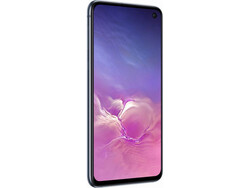
The Samsung Galaxy S10e is a first-rate smartphone that is well worth considering over the considerably more expensive Galaxy S10 or S10+. There are a few compromises, such as the lack of a third rear-facing camera and no option for a ceramic back, but you still get a device with a premium design that has a headphone jack, fast LTE, a powerful SoC and a camera that can compete with other flagship smartphones.
You must make do with less storage and RAM, but this should not be particularly irksome for most people. However, the darker screen, weaker battery life and higher surface temperatures are worth considering if you are choosing between the S10e and the Galaxy S10. We would also recommend watching out for touchscreen issues when playing "Arena of Valor", which we experienced during our tests. We have no such issues with other devices when playing that game. A wider frustration we have with the S10e and its siblings is Samsung’s refusal to support aptX HD, which seems like obstinance more than anything else.
The cheapest member of the S10 family is an excellent alternative to its more expensive siblings. You must make do with fewer shiny features such as an in-screen fingerprint sensor, but you still get a flagship smartphone that delivers in the right areas.
Overall, the S10e does not bring anything new to the market, but then neither do the Galaxy S10 or S10+. However, it delivers a solid flagship smartphone experience and performs well in almost all areas. We would like to see a real leap in image quality for the next generation of Galaxy S devices though, as the competition has started to show up Samsung’s S10 series, especially in low light. In short, the S10e is better value for money than both the Galaxy S10 and S10+.
Samsung Galaxy S10e
- 08/31/2022 v7 (old)
Florian Schmitt




